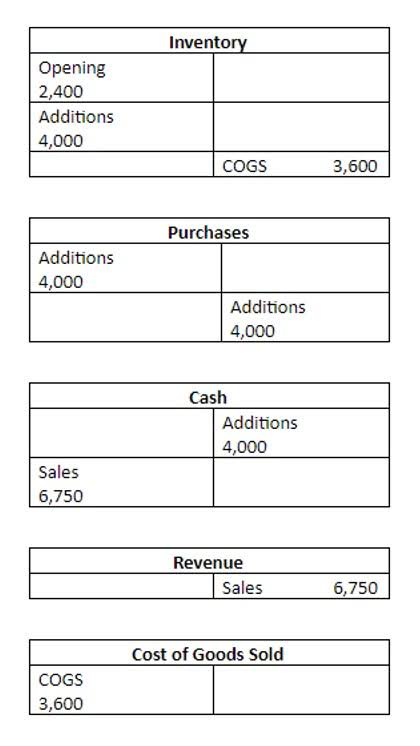The Key Differences Between ERP and Accounting Software: Which One Does Your Business Need?
The ERP Package also touches is a wash sale such a bad thing on almost every aspect of a business, thus naturally encouraging collaborative efforts. ERP software covers a range of functionality which is not generally offered by accounting software, often factoring in intangibles like human work hours, product lifecycles, performance units, and customer relations. This case study shows how ERP systems can address specific business challenges, leading to improved efficiency and decision-making.
- Analyze large data sets and translate them into actionable insight, giving team leaders the confidence they need to make pivotal decisions.
- By maintaining a single source of truth, businesses can ensure data integrity and consistency.
- Many ERP systems have overlapping capabilities with accounting software and FMS’.
- Seamless integration with existing software and systems is crucial for a successful ERP implementation.
- Reports can be generated with metrics, graphs, or other visuals and aids a client might need to determine how the business and its departments are performing.
- This module streamlines the accounts payable process, helping organizations optimize cash flow and maintain strong vendor relationships.
- The information within ERP is as accurate as possible, businesses can make realistic estimates and more effective forecasts.
Cloud-based ERP solutions
Fast forward to the 1980s and MRP systems evolved into MRP II, which included additional functions such as finance, HR, and distribution. This included tasks such as calculating material requirements based on production schedules and bills of materials (BOMs). The term ERP first appeared in the 1990s, although the first electronic systems for planning resources—the forerunner of the technology we use today—emerged several decades earlier. One of the biggest business challenges in today’s fast-paced world is maintaining real-time connection and integration between teams. Accounting software and ERP packages have come to mean the same thing in today’s market is that accounting software as we traditionally understand it breakeven point bep definition is fading away.
What is an ERP System in Accounting and Financial Management
In addition to ERP integration, HighRadius has the capability to integrate with your in house system to provide seamless data flow across departments. With this enhanced capability, you accrued expense journal entry can easily optimize your operations to increase efficiency and productivity. ERP systems essentially help finance and accounting teams by enabling them to collaborate seamlessly, be more productive, ensure financial integrity, and manage all the stakeholders efficiently. Accounting software is an IT solution designed to help companies manage their figures and costs, by automating accounting services such as recording of journal entries, invoice management, expense accounting, etc. Accounting software is often designed for SMEs, and can be used on a stand-alone basis. With a comprehensive and accurate view of financial tools, decision-makers can make informed decisions on financial strategy, investment, risk management, etc.
Shopping for a Financial Management System? Add Integrated Payments to the List
This comprehensive view enables teams to provide faster, more personalized service and proactively address customer needs. Teams can access complete customer histories instantly, enabling them to resolve issues faster and provide more informed support. Enterprise Resource Planning (ERP) systems offer a solution by integrating core business processes into a unified platform. According to SNS Insider research, modern company leaders are demanding increased integration of real-time analytics and AI-driven insights within ERP systems.
- Ramp integrates seamlessly with multiple ERPs, not just Sage Intacct, eliminating the complexity of manual processes and enabling your business to operate more efficiently.
- Sage makes no representations or warranties of any kind, express or implied, about the completeness or accuracy of this article and related content.
- Because these systems offer such tailored features, businesses don’t have to do too much customization or integrate with many other external tools.
- When thinking about the importance of ERP for finance accounting, consider two broad areas—automation and analysis.
- ERP systems often include tools to create, manage, and analyze budgets and forecasts.
- Yet there are a few standouts, especially when it comes to how these platforms support finance and accounting processes.
Insights and Reporting
And by removing manual data entry, you immediately save time (and reduce drudgery) for your employees, and can re-orient them towards more strategic, impactful activities. That’s better for their morale (and retention) but also saves the company money by requiring less workforce to manage the payment acceptance process. ERP systems tie together a multitude of business processes and enable the flow of data between them. By collecting an organization’s shared transactional data from multiple sources, ERP systems eliminate data duplication and provide data integrity with a single source of truth. Enterprise resource planning (ERP) is a platform companies use to manage and integrate the essential parts of their businesses. Many ERP software applications are critical to companies because they help them implement resource planning by integrating all the processes needed to run their companies with a single system.
Benefits of ERP Systems for Financial Management
Compliance with financial regulations and data security are critical considerations for businesses. ERP accounting systems incorporate robust security measures to protect sensitive financial data, preventing unauthorized access and ensuring data privacy. Additionally, these systems often include compliance features, such as audit trails and regulatory reporting capabilities, to help businesses meet legal requirements and industry standards. Organizations are seemingly always seeking ways to optimize their processes and improve efficiency. One key aspect of business management is accounting, which plays a crucial role in financial reporting, transaction tracking, and overall financial health. To streamline these operations, many companies are turning to ERP accounting systems.
What are the benefits of using an ERP solution for your accounting?
Offers contingent on using Brex services are subject to qualifying for those services. On-premises ERP systems are installed on a company’s local servers and managed internally. This type of ERP offers greater customization and security but requires a larger IT team and infrastructure investment. Enterprise Resource Planning (ERP) might sound like just another corporate buzzword, but if you’re running a business—big or small—this technology can be a game-changer.








